Quantum Communication and Sensing
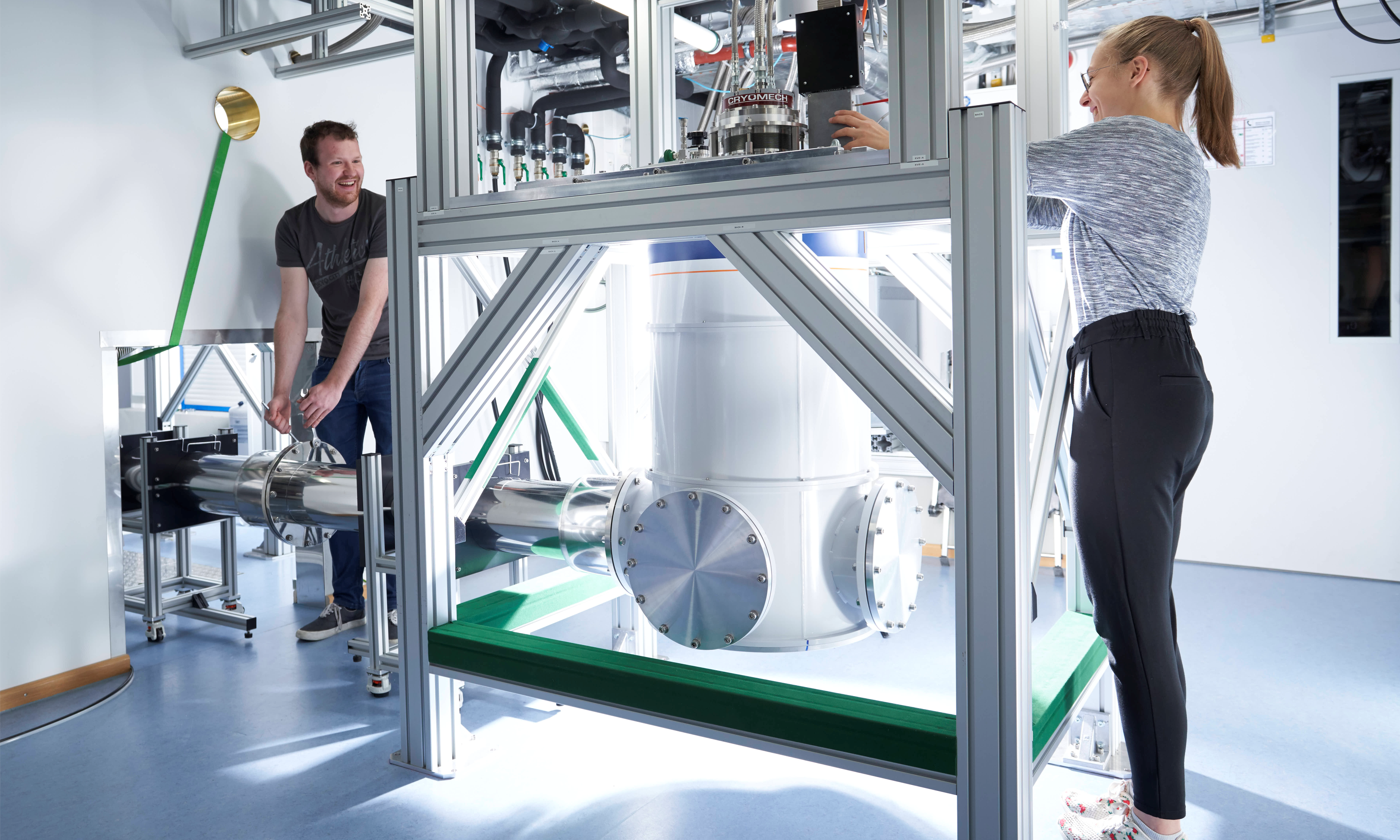
We exploit the unique quantum properties of microwaves to develop exciting application scenarios such as quantum radar-type sensing, secure information transfer, and gate teleportation between distant superconducting qubits. We have pioneered this research field and are one of the leading groups worldwide. In a long-term perspective, we envision local area networks of superconducting quantum computers and a full-fledged quantum internet.
Microwaves in the frequency range of 1-10 GHz are the natural frequency scale of many well-known applications such as radar, mobile communication, or classical information processing. Consequently, microwaves are also promising candidates for modern quantum technology applications. The latter include quantum radar, networked superconducting quantum computing, and free-space quantum communication on a range also relevant for 5G. One of the key advantages of quantum microwaves compared to other frequency regimes is the fundamental technology match between the circuits used to generate, manipulate, and detect quantum microwaves and those used by several big IT companies and young start-ups for superconducting quantum information processing. In particular, our microwave approach removed one major roadblock on the path to high-fidelity gates between remote quantum circuits, namely the inefficient and demanding frequency conversion from microwave to optics and back.
Our research focuses on the continuous-variable regime, which offers advantages in terms of robustness and technological implementation. Since today’s road to quantum information processing is typically based on a digital approach, we put special emphasis on investigating hybrid approaches between discrete-variable and continuous-variable circuits and signals.
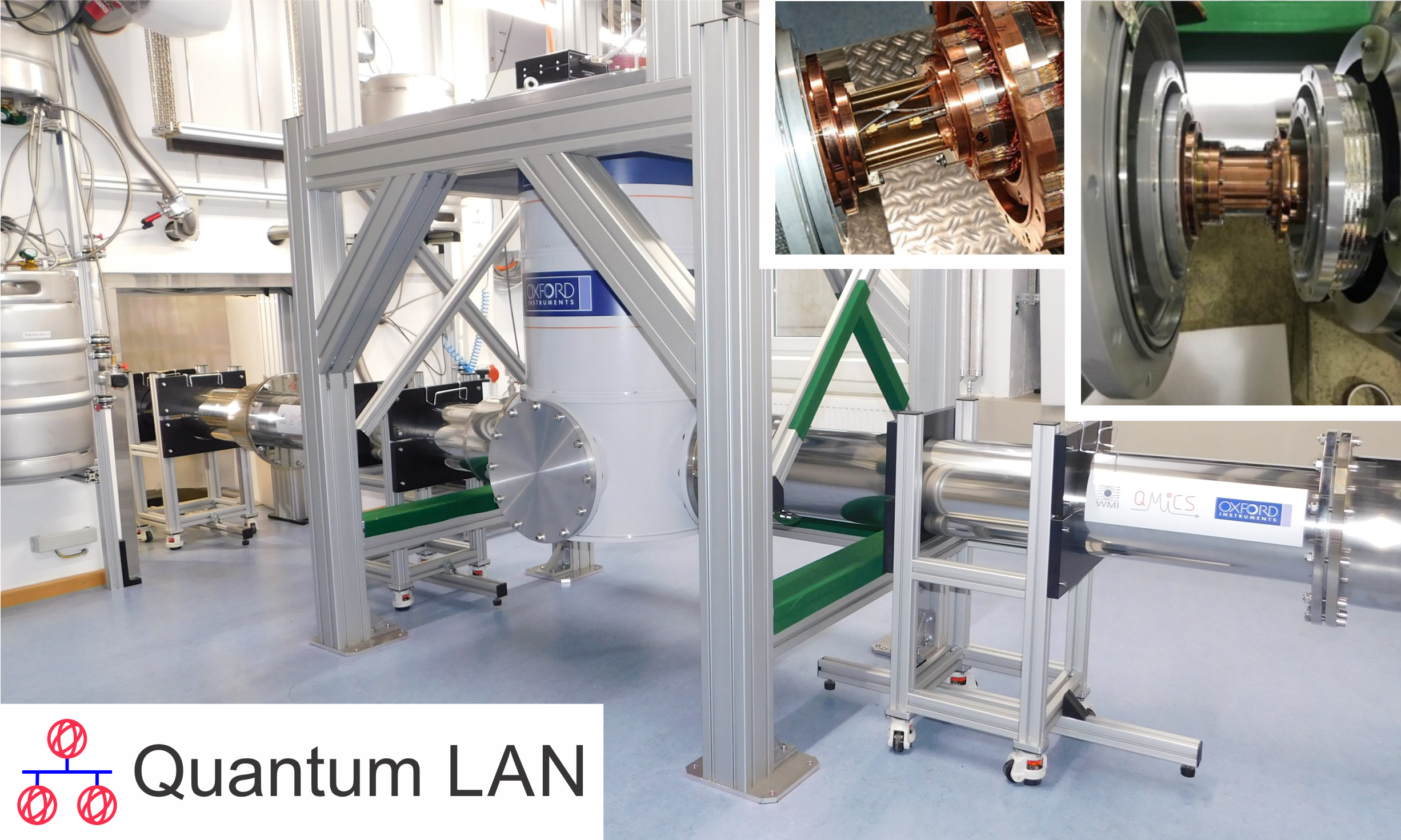
Microwave quantum networks are one technological cornerstone of many quantum microwave applications. For superconducting circuit architectures and quantum microwaves, such networks must currently operate at millikelvin temperatures. Since superconducting quantum information processors come with a proper cryostat, a so-called dilution refrigerator, anyways, care has to be taken only with respect to the proper design of a connection between such cryostats. At WMI, we have set up such a point-to-point connection [link Installation video] between two dilution refrigerators as a testbed for quantum communication and cryptography protocols. Equipped with low-loss superconducting transmission line cables, our installation can be viewed as a quantum local area network (Q-LAN) cable [link installation video] . The transmission losses of few dB/km are comparable to those in standard optical fibers. Through this Q-LAN cable, we plan to run microwave quantum communication and cryptography protocols. Furthermore, we aim to investigate the expected tolerance of our Q-LAN cable to higher temperatures experimentally. In a long-term perspective, we envision a quantum local area network with high connectivity between multiple nodes.
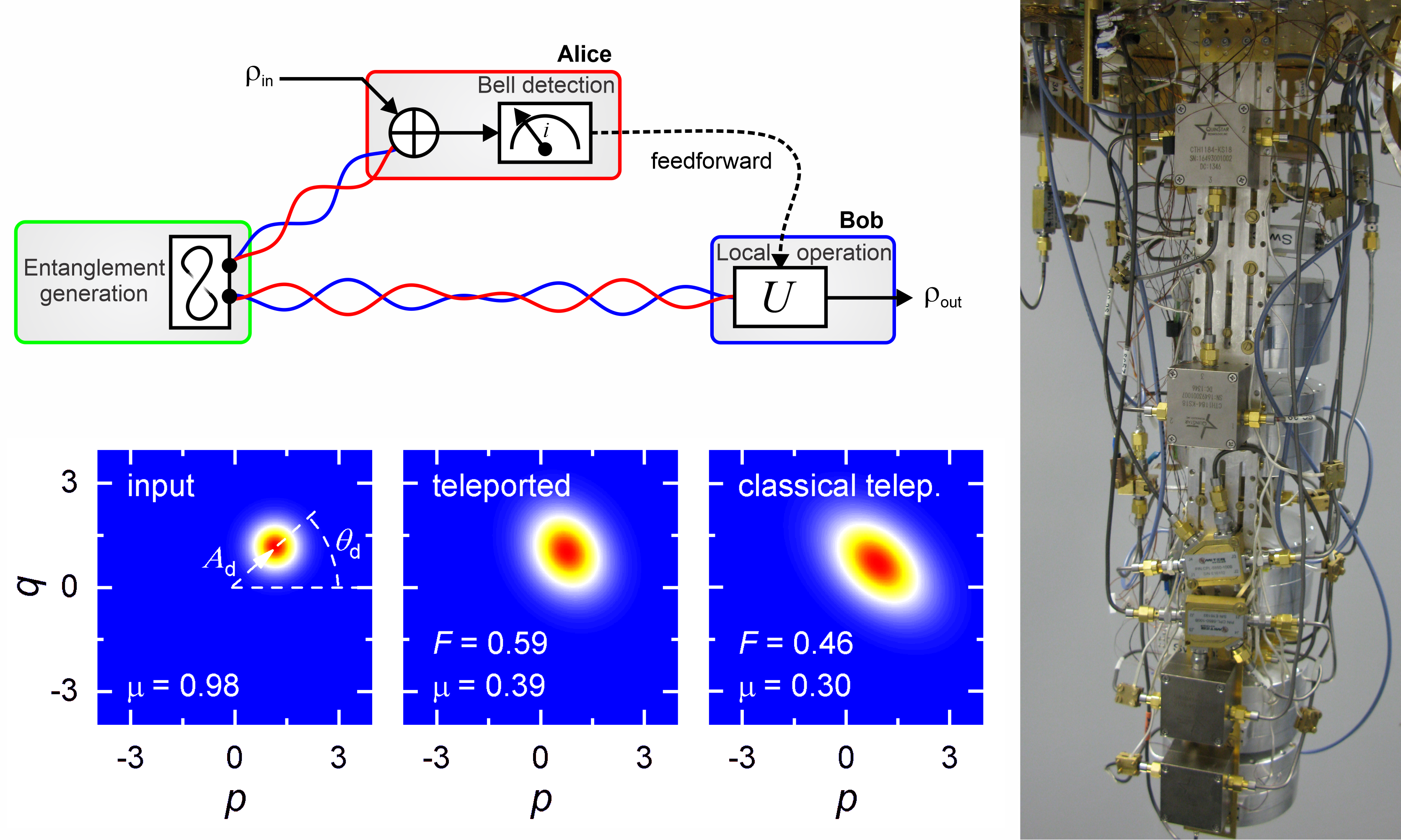
Our long-term vision is to develop distributed quantum computing & communication based on microwave quantum local area networks (QLANs). Microwaves are the natural frequency regime of several quantum computing platforms (superconducting circuits, NV centers, quantum dots). Therefore, microwaves are the natural frequency range for quantum communication between such platforms. In particular, no frequency conversion is required which usually is inefficient and related to significant losses. Moreover, microwaves can be distributed via superconducting cables with surprisingly small losses, eventually allowing for quantum communication and cryptography applications.
An important near-term goal is the demonstration of a QLAN via quantum teleportation and to develop a roadmap to real-life applications for the second/third phase of the European Quantum Technology Flagship. An important enabling technology for achieving the goal is the development of a microwave QLAN cable connecting the millikevin stages of two dilution refrigerators. This technology is developed by WMI together with its industrial partner Oxford Instruments within the European Quantum Technology Flagship project QMiCS. The resulting “enabling” commercial products are beneficial for quantum technologies at microwave frequencies in general.
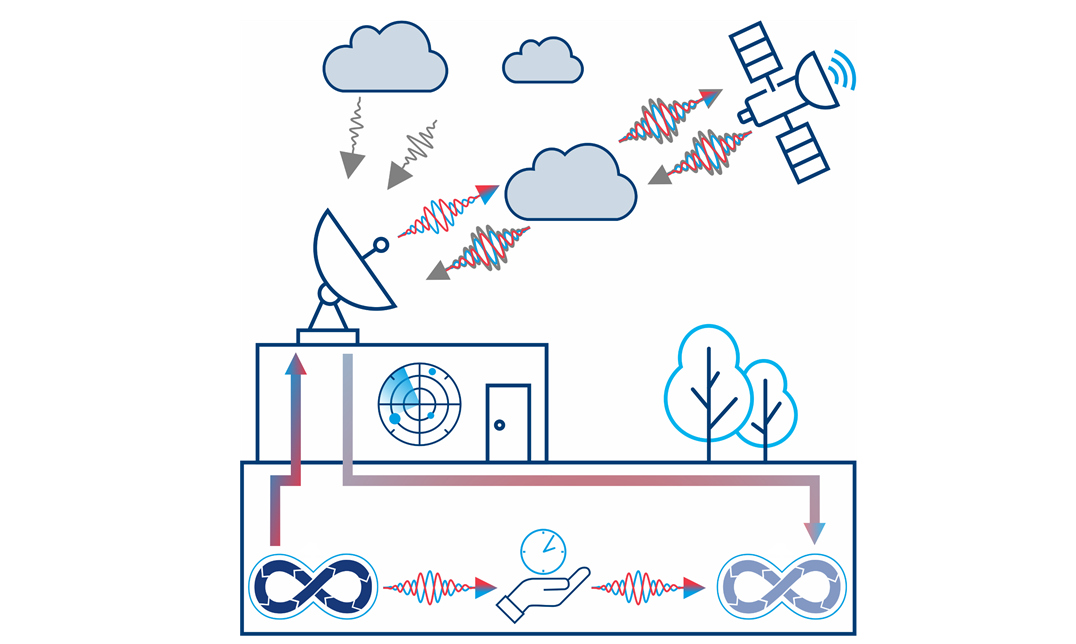
Quantum microwaves promise a fundamentally increased sensitivity over classical sensing protocols. As in most sensing applications, the quantum advantage is typically restricted to the low-energy regime with signal energies on the order of a single photon.
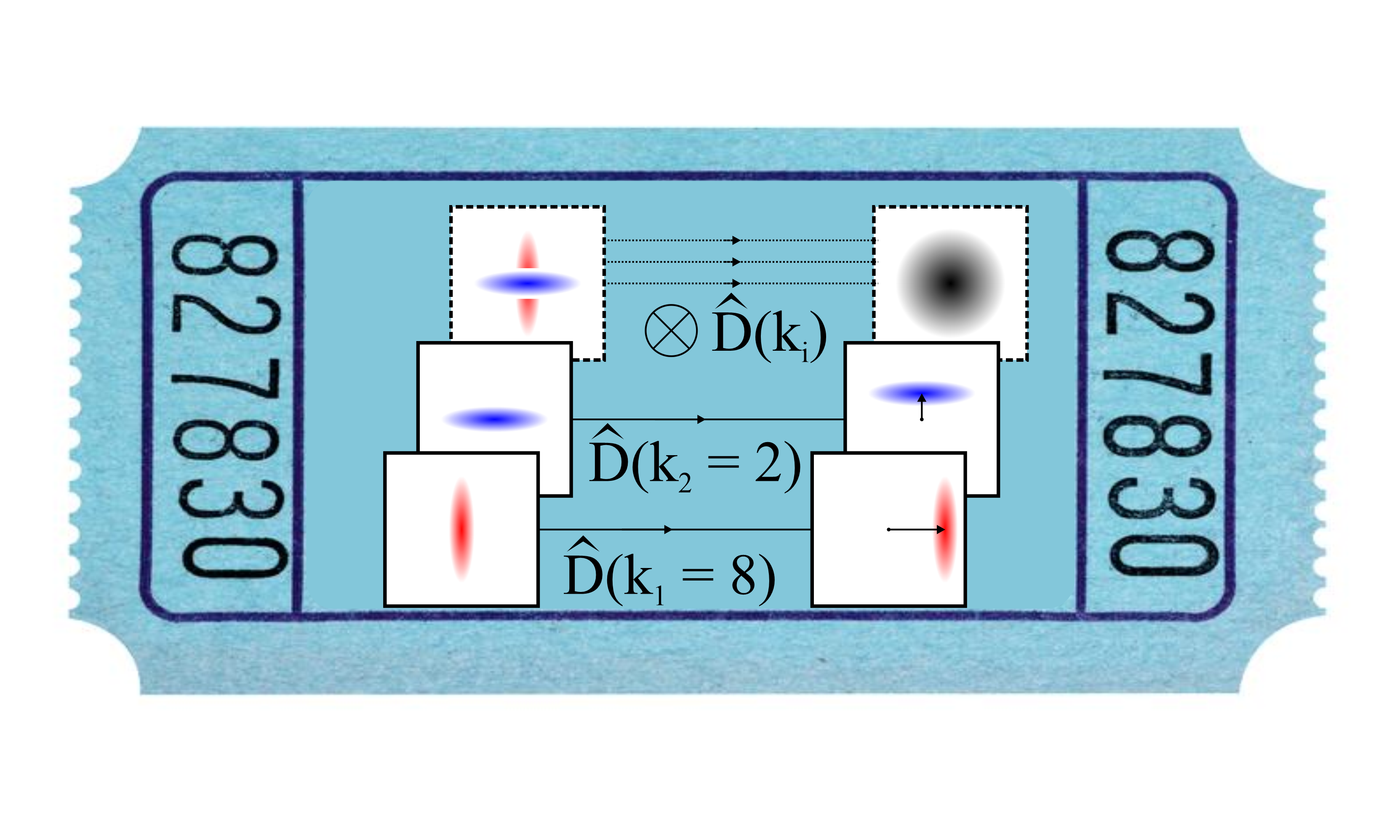
The secure transmission of classical information is of tremendous importance in our society, e.g., when exchanging information on finances, health, or private issues. However, the advent of quantum computing poses a serious threat to classical encryption methods. One possible solution is the use of quantum cryptography methods, either based on actual or virtual entanglement between the communicating parties. Once a Q-LAN between quantum computers is realized, the exploration of such protocols is a natural task. Among various cryptography protocols, quantum key distribution (QKD) has the most obvious application potential. Ideally, QKD exploits quantum resources for the intrinsically secure exchange of a classical key for encoding a classical message (text, music, video etc.) between partners. At WMI, we use and extend the well-established toolkit of quantum microwave technology to implement QKD schemes. Potential advantages of microwaves are high secret key rates due to large absolute bandwidths and the potential for short-distance free-space implementations. The latter promise compatibility with the existing classical microwave infrastructure and ranges comparable to that of current 5G.
